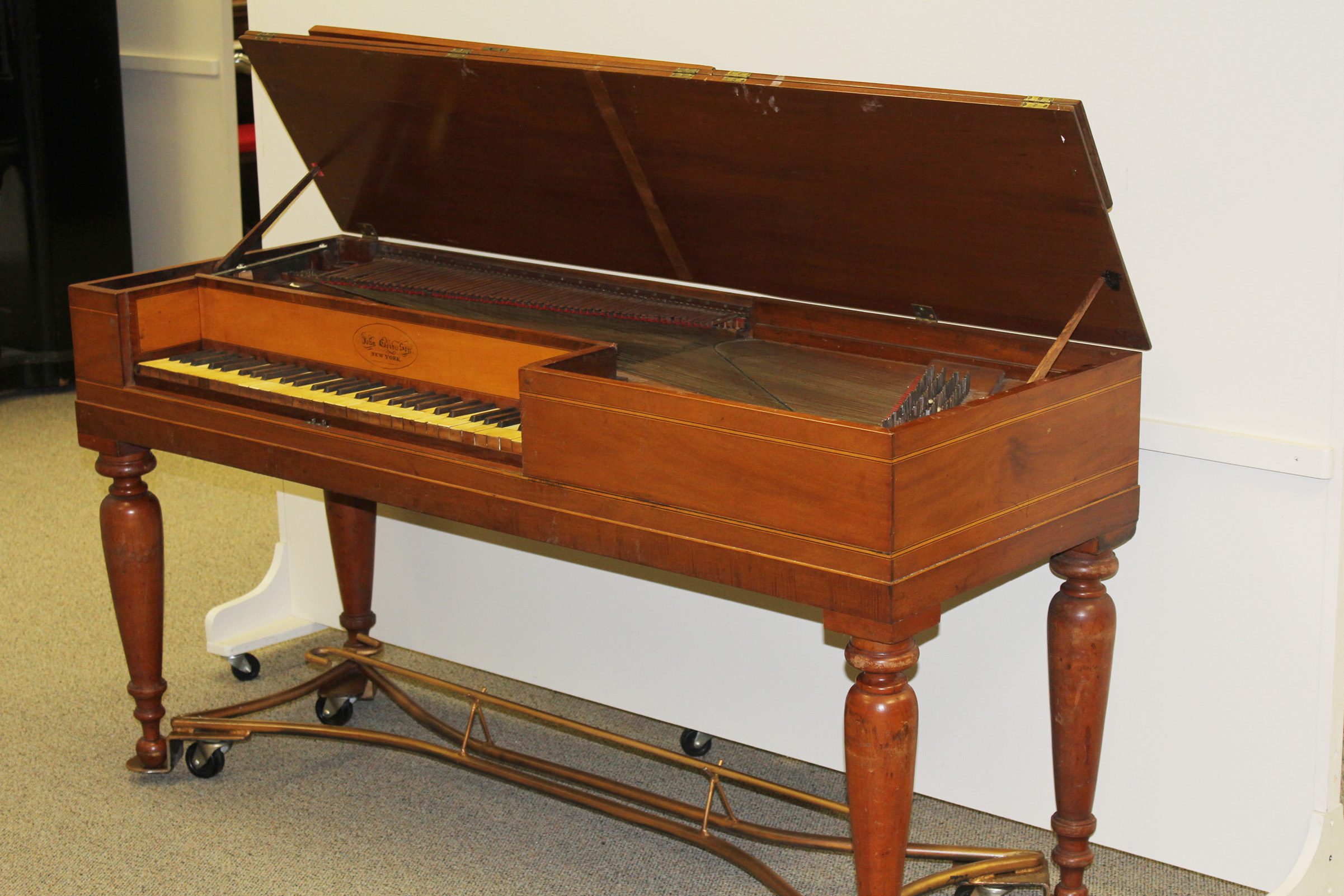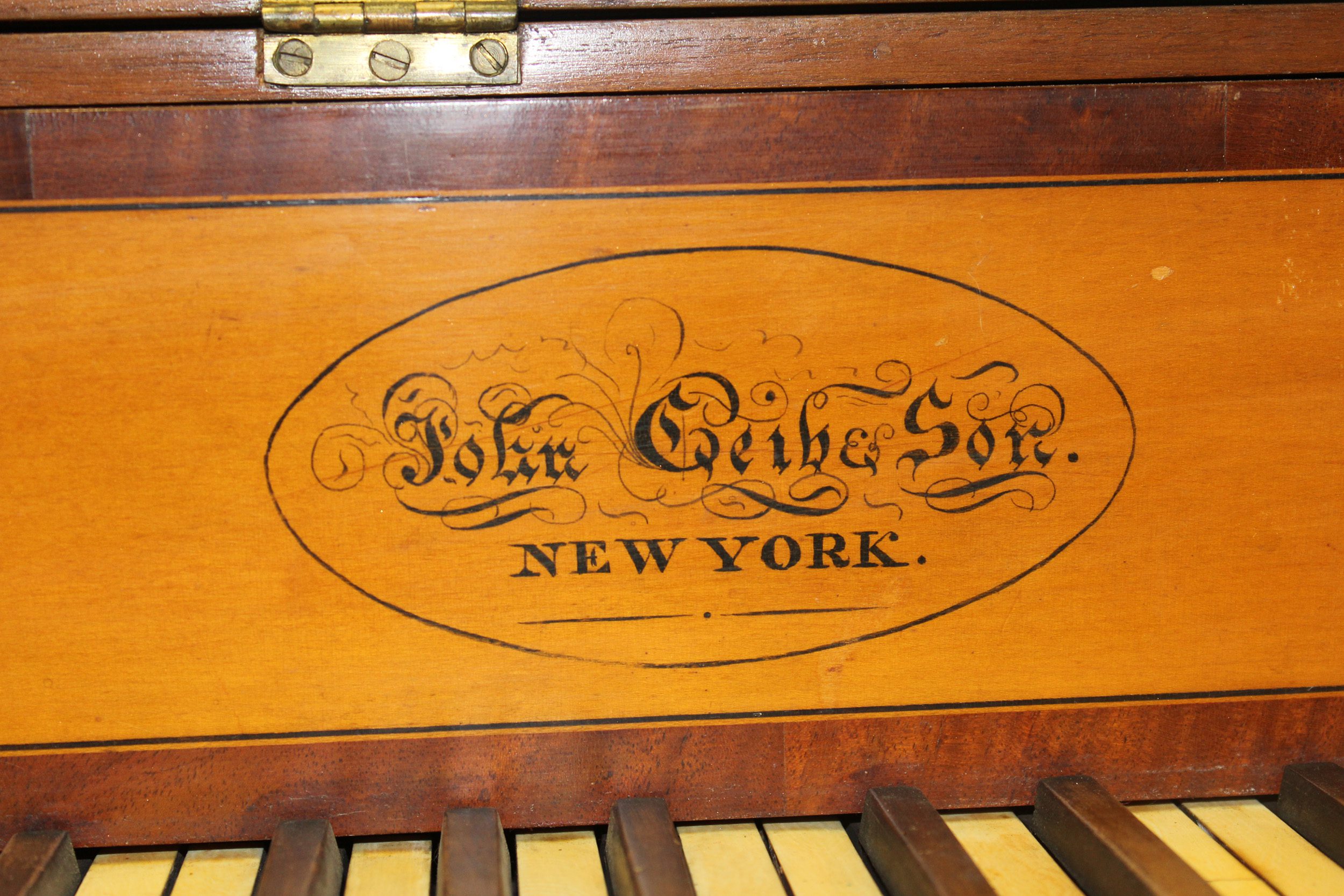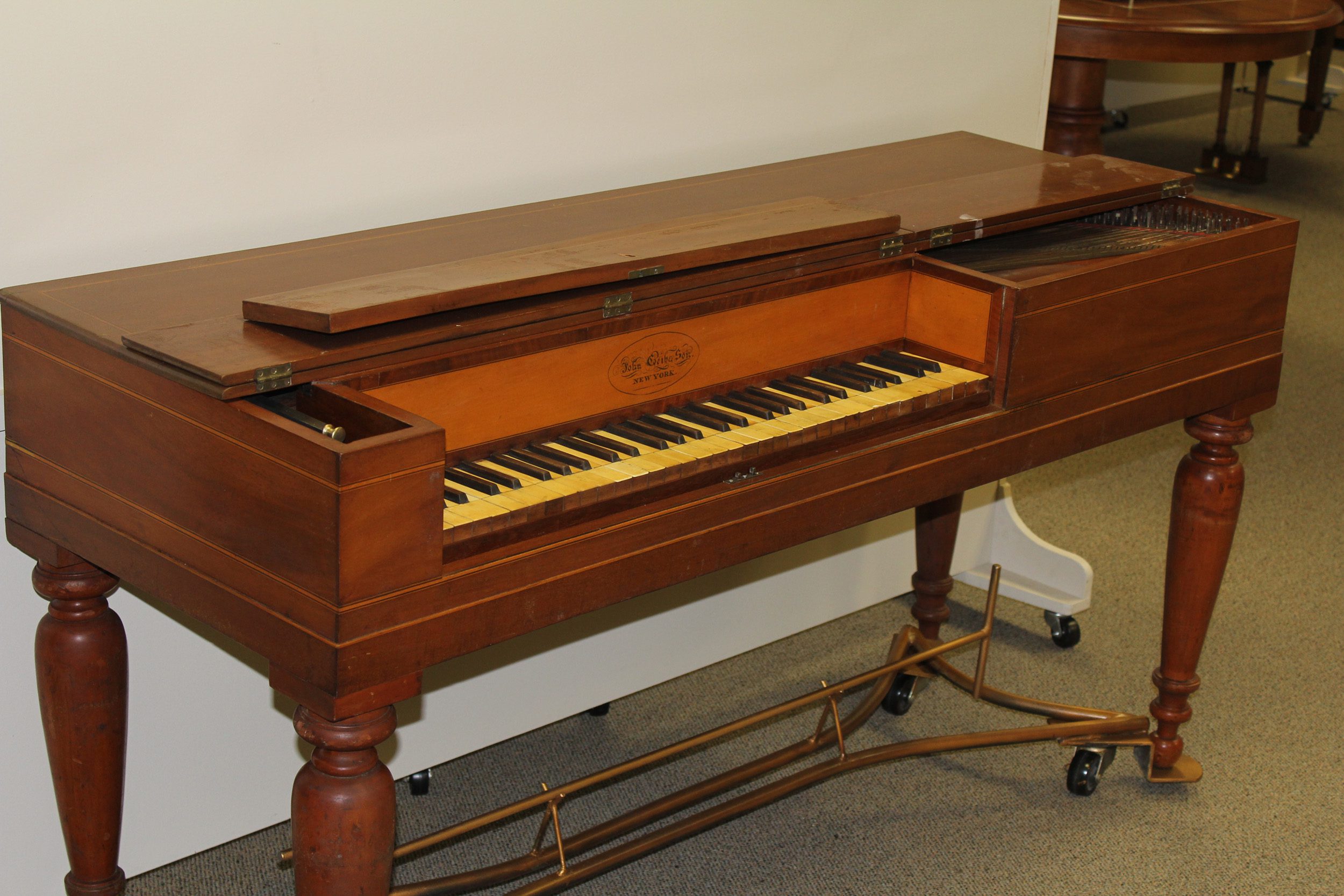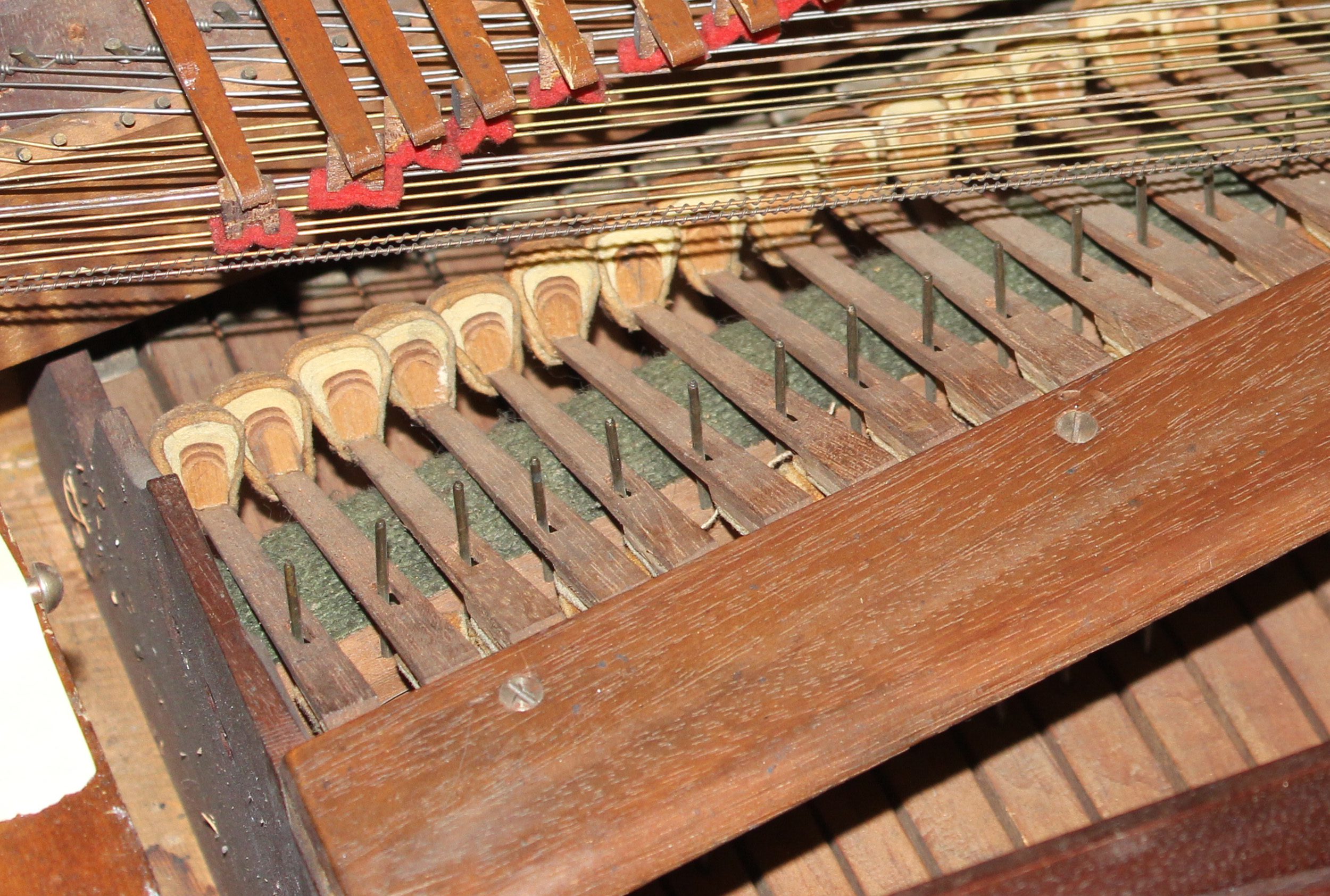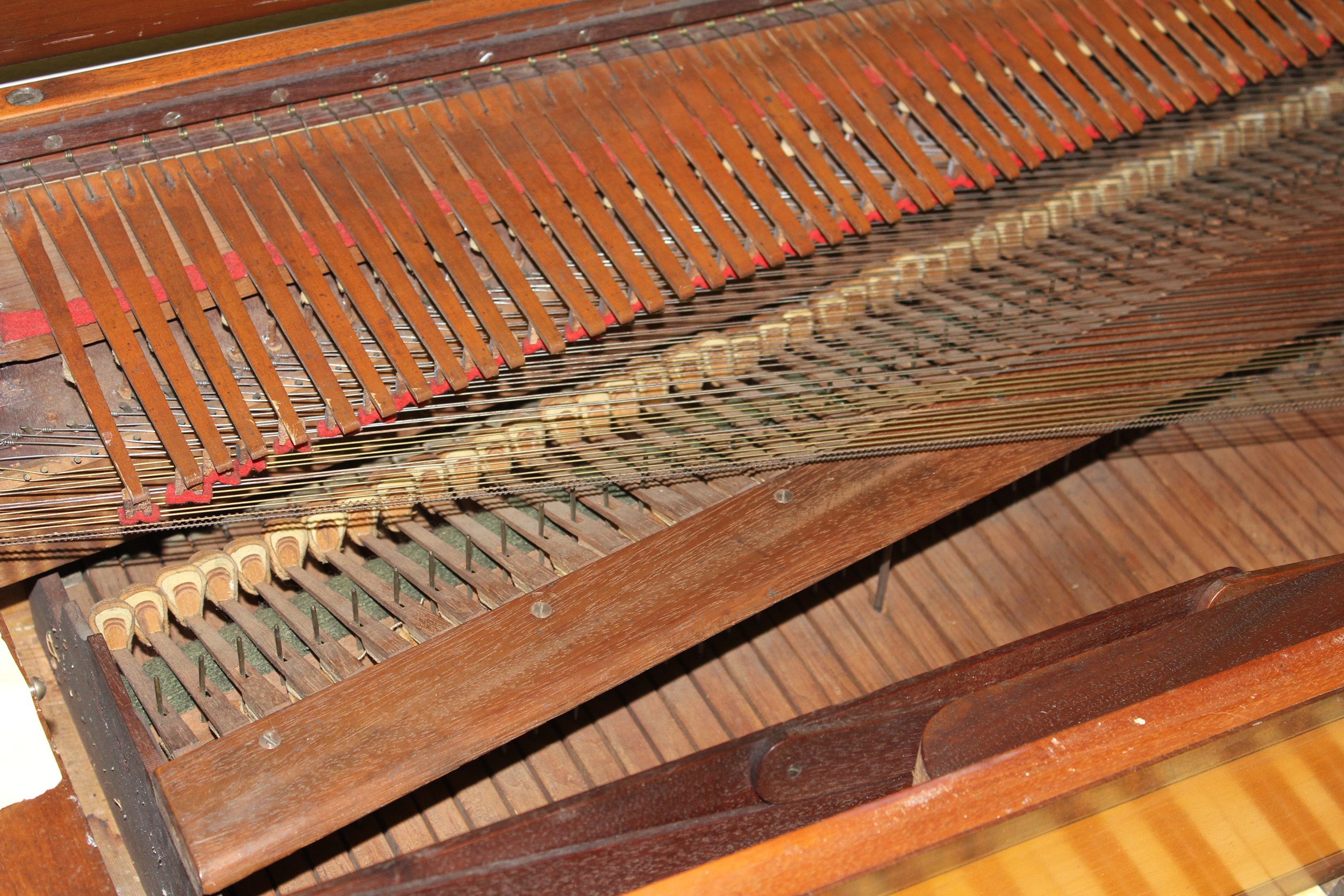John Geib (1744-1818), born in Germany, was originally an organ builder. In the mid-1770s he moved to London, where he supposedly worked for Schudi (predecessor to Broadwood), and later built pianos for Longman & Broderip and in partnership with Ludwig Lenkfeld. In 1786 he filed an important patent for an action with an intermediate lever between the jack and the hammer, and with an adjustable escapement. This action is usually called the “English double action,” sometimes the “Geib action” or the “grasshopper action.”
Geib moved to New York in 1797, and began making pianos and organs there together with his son John Geib, Jr. This piano, serial #5151 (which dates it approximately to 1804), closely resembles squares made in London around that time, including the Museum’s Buntebart. There is a similar Geib, serial #5155, in the Smithsonian Museum of American History.
